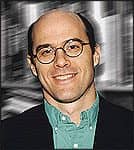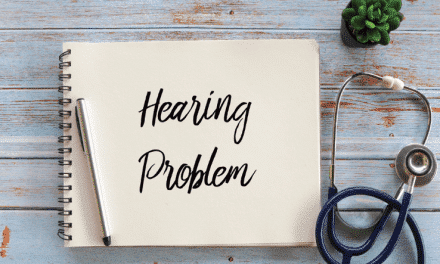An innovation developed by a Purdue researcher in the College of Health and Human Sciences may make it possible for people with severe hearing loss to hear high-frequency sounds like “s,” “sh,” “f,” and “th.”
The technology may one day help Mel Chua, a Purdue University doctoral candidate in engineering education, who received her current set of hearing aids in May 2012.
Chua has severe hearing loss, but has not worn hearing aids most of her adult life because they didn’t offer a significant improvement to her hearing.
“I got my first hearing aids before I started kindergarten,” she said. “I refused to wear them in fifth grade, and I more or less went without them except for brief interludes at ages 16 and 20. I tried them at those times and decided they weren’t helping me.”
Chua said hearing aids didn’t help her because she was still missing a lot of speech sounds, especially high-frequency sounds, like “s” and “sh.”
“When I competed in school and district spelling bees in elementary and middle school, I had to ask if the word I was supposed to spell was singular or plural,” she said. “I couldn’t hear the high-frequency ‘s’ sound at the end of words.”
Now, Joshua Alexander, assistant professor in Purdue’s Department of Speech, Language and Hearing Sciences, is working on an innovation that may make it possible for people with severe hearing loss to hear those high-frequency sounds.
Alexander explained, “Current hearing aid technology works best for people with some residual ability to hear these pitches, but there are too many challenges for it to help listeners with a very restricted pitch range.”

|
|
Joshua Alexander, assistant professor in Purdue University’s Department of Speech, Language and Hearing Sciences, tests hearing aids used by Mel Chua, Purdue doctoral candidate in engineering education, in his laboratory. Alexander has created a computer algorithm that could make it possible for hearing aids to help people with severe hearing loss to hear high-frequency sounds such as “s,” “sh,” “f,” and “th.” (Purdue Research Foundation photo) |
Alexander tested variants of existing hearing aid technology, which use algorithms to move information from higher pitches into a lower pitch range, but found little success.
“Those who need this technology the most are people like Mel. Unfortunately, because their pitch range is so limited, everything is placed into a very narrow area, which makes different speech sounds too similar to one another. There is less to separate them,” he said. “Listeners have to relearn how to perceive a lot of information in the new pitch range, assuming the sounds can be made different from one another in the first place.”
Rather than design an algorithm and hope that listeners’ perception would accommodate to it, Alexander discovered what listeners needed to enhance perception in the new pitch range. He then designed an algorithm to accommodate these perceptual needs.
“Unlike other algorithms that simply shift high-frequency sounds to a lower pitch range, this algorithm mirrors and flips them. By moving the highest pitched speech sounds, like ‘s,’ to the lowest pitches, the listener can more easily relearn them because they are still different from other speech sounds in the mid-pitch range, like ‘sh,’ ” he said. “This also means the listener doesn’t need to relearn the speech sounds in the mid-pitch range because the algorithm hasn’t displaced them as far. Most of the change is at the extremities.”
Alexander said the algorithm takes advantage of other differences between speech sounds to enhance perception, and that multiple features can be customized for each listener. It is meant to complement existing hearing-aid technology rather than compete against it, and it may even be used in conjunction with cochlear implants, which are surgically implanted electronic devices.
“A new protocol is to give the person with a cochlear implant a hearing aid, too. Implants give the high pitches that a listener is missing, but not the low,” he said. “The algorithm could provide redundancy as the listener hears high pitches from both the implant and the hearing aid.”
Alexander spoke about his innovation during the International Hearing Aid Conference in Lake Tahoe, Calif. He has received funding from a National Institutes of Health Challenge Grant and Purdue’s Entrepreneurial Leadership Academy.
The next steps to develop the innovation include finding partners to fully test the algorithm, place it in hearing aids, and validate it with additional testing.
SOURCE: The Purdue Office of Technology Commercialization




